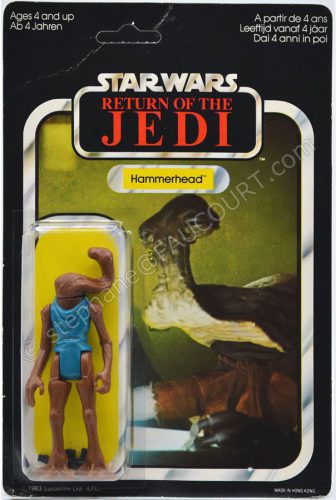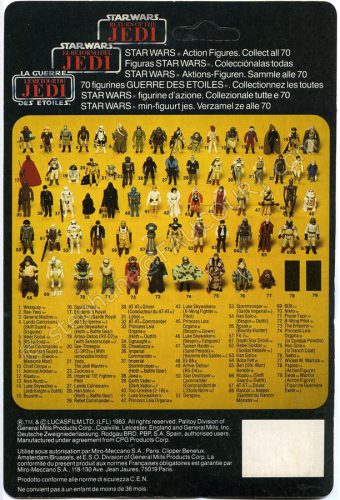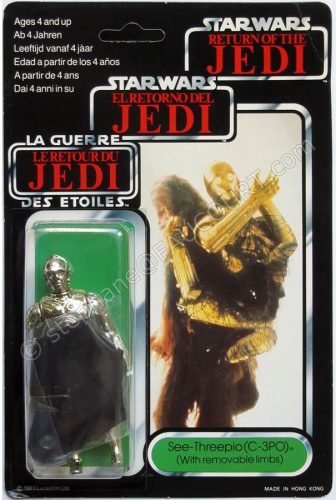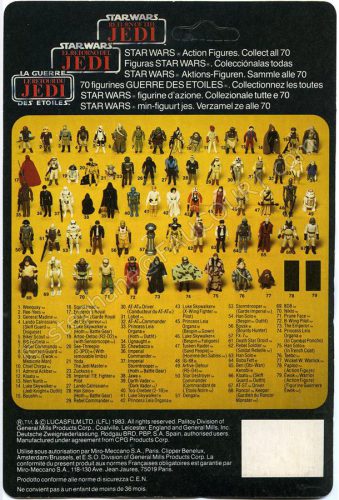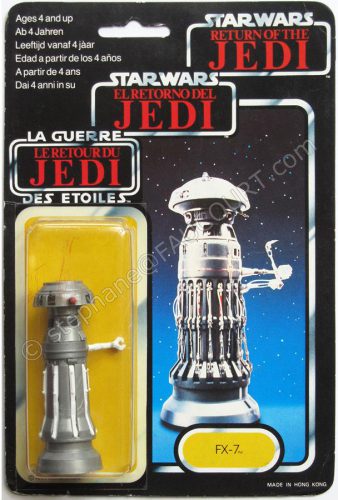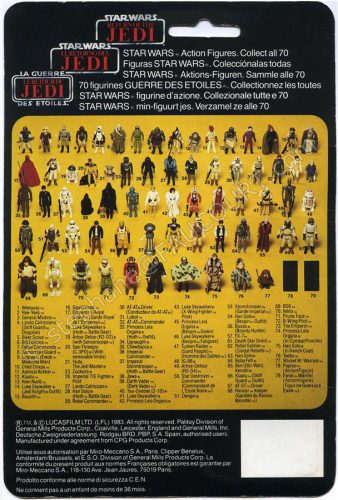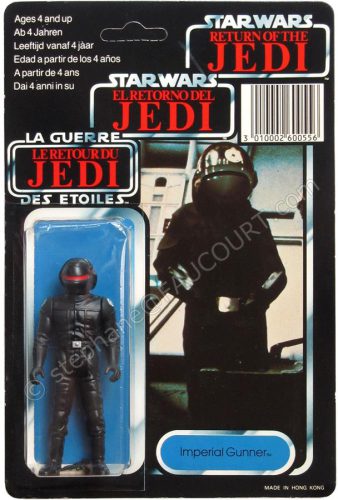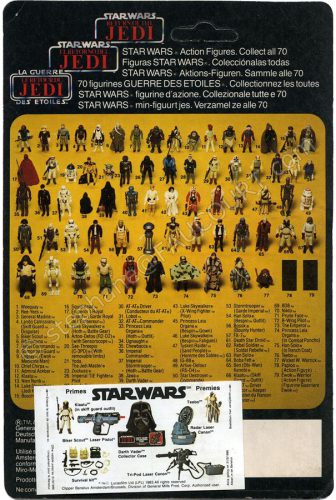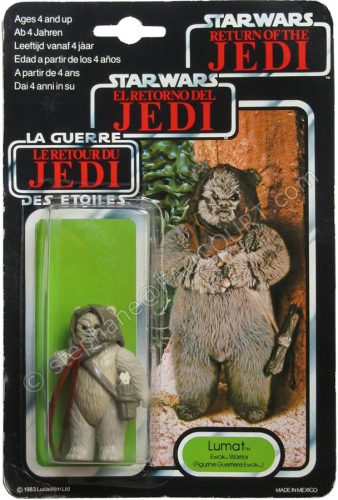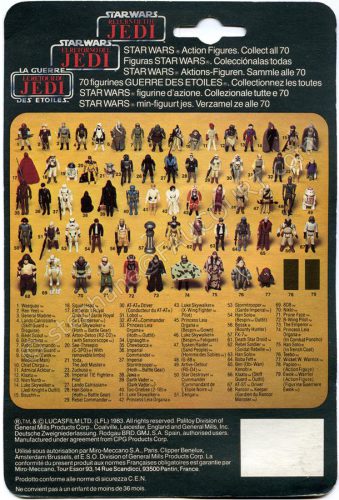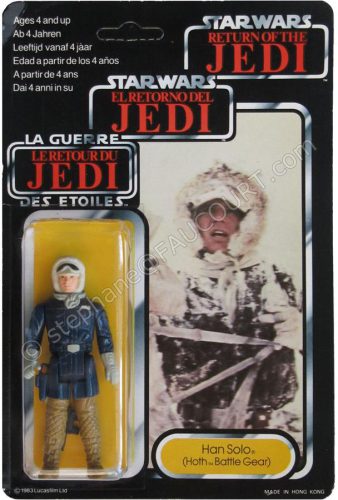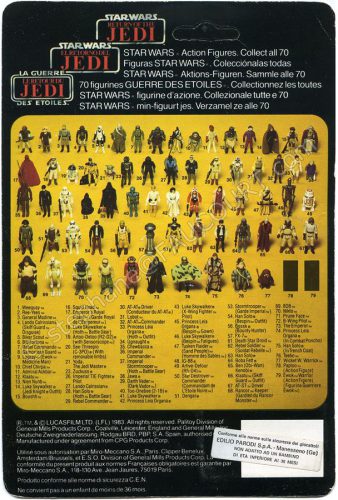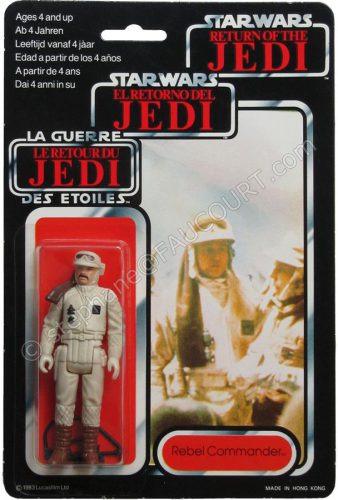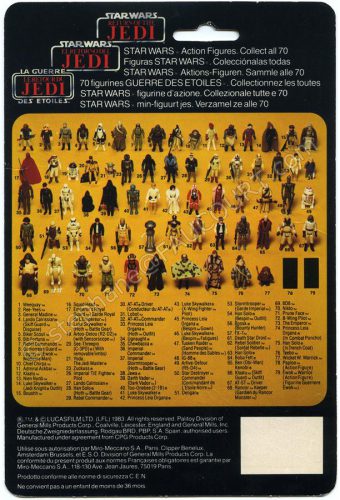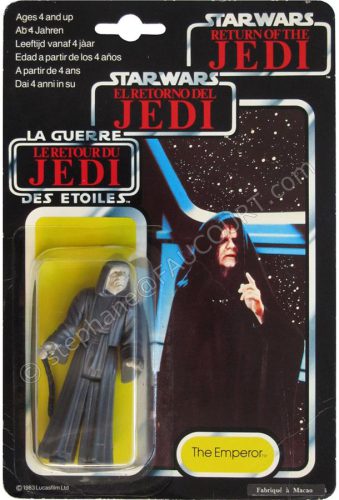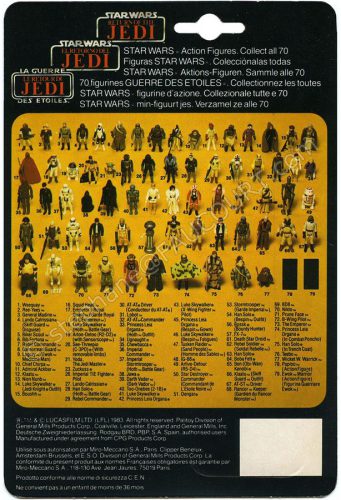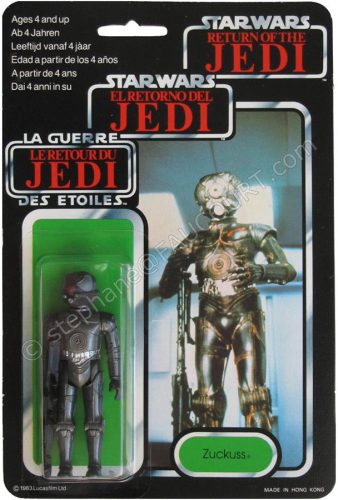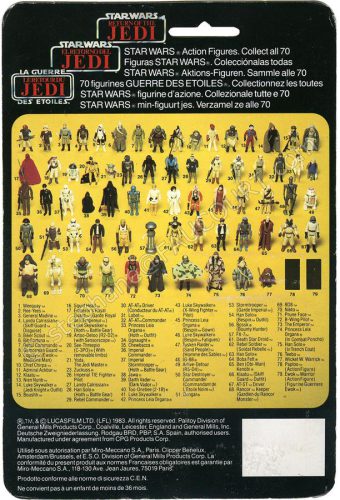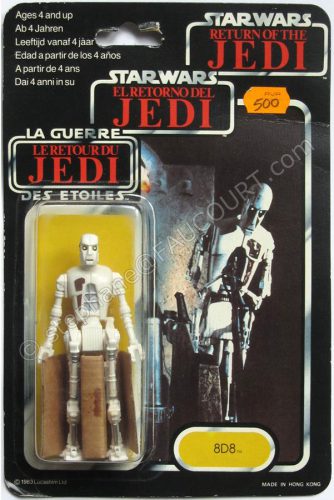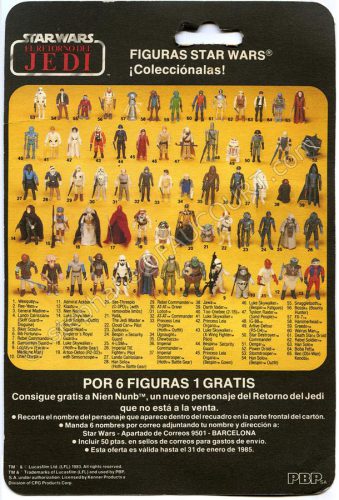Trilogo Cardbacks

Stéphane Faucourt
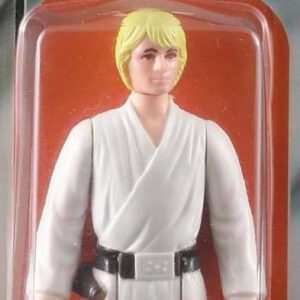
Jeff Echtenkamp

Chihuahua
- January 11, 2023

Stéphane Faucourt
- January 11, 2023

Jeff Echtenkamp

Chihuahua
TABLE OF CONTENTS
Texts / descriptions are copyrighted property of Stephane Faucourt, granted to Variant Villain usage on this page ; they can not be used or reproduced in any means without Stephane Faucourt’s express approval.
INTRODUCTION
The Trilogo line was introduced with the second wave of “Return of the Jedi” figures. It was the culminating multi-lingual packaging standard set by Palitoy in 1984 in order to globalize packaging and marketing efforts for the entire European market. Widely available, they ended-up being sold by packs or at clearance circa 1986, and were even retailed in the U.S.A.
They were initially manufactured by each major European licensee for its respective domestic market (France, Spain, Germany, and the United Kingdom) before being definitively standardized circa late 1985. Those differences in production location and standards resulted in various characteristics (e.g. plastic bubble shape, hanger tab shape, country of origin sticker, paper finish and thickness) which enable to determine the country of origin of a packaged toy, as well as the country where it was ultimately retailed.
The character’s imagery can be different / reversed / more edited than the standard photo used on previous series, and the action figure count/picture remains unchanged stopped at 70 figures out of the 79 available at the time of release, and 93 by the end of line.
The Trilogo line is particularly attractive collecting-wise as it allows to assemble almost the entire collection of action figures from all three movies on the same branded cardback.
70-A HYBRID
This blister features a Palitoy ROTJ multi-lingual front and regular Trilogo back ; it is supposedly a transition between product ranges for 6 figures, avoiding the need to design a “true” Trilogo blister card for action figures that had been widely retailed before. The blister is the common one for Trilogos – large with etched edges. They are classified by collectors as “hybrid” Trilogo cards.
70-B (REGULAR)
The standard widely available packaging type for Trilogos, recognizable from the three main logos (English, Spanish and French) cascading down the packaging. The back is the standard Trilogo back, and the blister (large, extra-large, or small depending on the action figure size) comes with etched edges.
70-C
In 1984, the card front was slightly changed by enlarging the action figure placement colour area (and including the copyright into it), and using a much thinner and cheaper cardstock. Some of the figures already available were rereleased with that style in lesser quantities. Lumat and Paploo (late 1984 releases) were introduced directly onto that card. Some figures on that cardback are very challenging to locate, and some only specific to a country (eg. Nikto for France).
TRILOGO EUROPEAN LICENSEE (alphabetical)
General Mills Juguetes 85
Trilogo marketed in Spain from 1985, in addition to the typical details from Trilogo PBP, the back has been altered to reflect the new company name resulting of General Mills’ reorganization of its European subsidiaries. PBP was changed to “GMJ” (General Mills Juguetes) and Meccano’s business address was also finally corrected to “Essor Tower” address located in the Parisian suburb of Pantin (as it was done on some vehicles / playsets too).
Meccano 1
Trilogos produced by Meccano for the French market are recognizable from their visually smoother layout due to the use of ROTJ-style blisters (used on Meccano and Palitoy ROTJ lines) adapted to the action figure. As a result, a wide range of blisters can be found such as: narrow/normal/large blisters, small/deep blisters, narrow/standard double-stem or even specific blisters. They all have rounded edges and a rounded base sealed to the card.
In addition, French Trilogos cards were printed on a much thicker cardstock, some on darker colours which are noticeable on the colour placement area (those are also called “dark insert”). The back is printed on a grainy textured cardboard with darker orange colours (instead of the standard yellow).
They are much more challenging to find and sought after than Palitoy Trilogos, and feature specific figure variants, plus the infamous General Madine, only marketed in France on that packaging.
Meccano 2
Trilogos released in France have additional distinctive details to those described previously, such as a different hanger tab shape (also found on PBP/GMJ Trilogos) designated as “UFO” punch, and the addition of French COO notification sticker to match French regulation – those stickers can be black or white (rarer).
pbp
In Spain, the first eight Trilogo blister cards were manufactured with a Trilogo layout for the front, and a Spanish “El Retorno del Jedi” (“Return of the Jedi”) product range layout on the back. The cardback also promoted a free figure special offer for “Nien Nunb”.
They are recognizable on the front from the larger hanger tab and very large blister.
